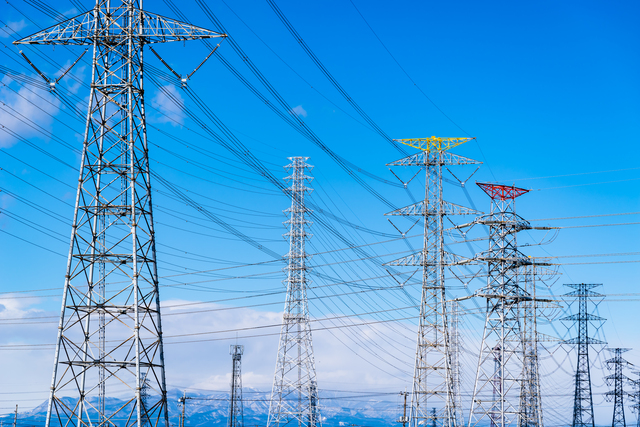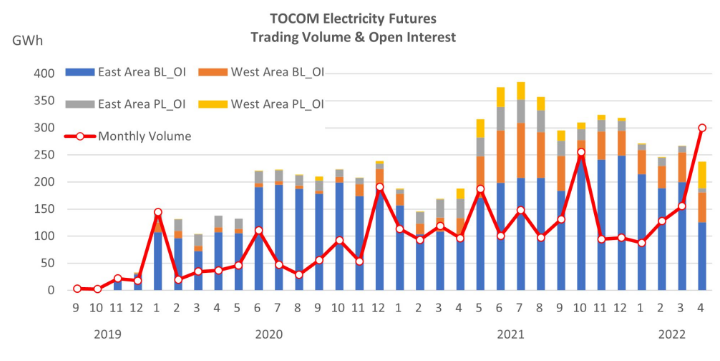TOCOM Energy
JPX Energy Market Updates(Jul. 4, 2022)
Oil prices remain rangebound last week as conflicting signals of recessionary fears and a supply crunch kept prices in a tight range. Although oil price has largely remain steady, crude oil benchmarks for Asia and Europe intermonth spread were on track to gain for a third day with the spread of JPX Dubai future contract for September and November delivery settled at equally 5.4$/b. Intermonth spread of NYMEX WTI remain rangebound as EIA data showed a smaller crude inventory draw than expected and a bearish unexpected gasoline and distillate stock builds over the last two weeks.
On the demand side, demand for transportation fuels has been picking up in Asia, as improved mobility push regional economies to open up to near pre-pandemic levels. China changes Covid-19 quarantine rules in first step towards easing border controls. The measures include cutting quarantine time for overseas arrivals to seven days at a government-run facility, followed by another three days in home isolation. They mark the biggest changes to the rules since China closed its borders in March 2020, but the controls remain tough compared to many countries that have completely reopened.
An easing of travel restrictions and reopening of major cities from lockdowns that had deterred cross-border travel and resulted in international flights running at just 2% of pre-pandemic levels boost optimism that growth can get back on track.
China's crude throughput is set to rise month on month in June as refineries resume operations from maintenance amid expectations of demand recovery from pandemic-led movement curbs. Weekly data from Longzhong shows that operational rates at China's independent refiners rebounded to more than 58% last week from around 50% in April. It is expected that run rates to reach around 70% by end-July.
Last week, China's Ministry of Commerce has issued this year’s second batch of quota on non-state crude imports, permitting 52.69 million tons of imports, a jump of 49.5% from the same batch for 2021, according to a notice from the ministry. The new allowances bring China's total non-state import quotas to 161.69 million tonnes so far this year, a rise of 2.45% year on year.
The amount of new quotas issued is in line with expectations, the new quota will allow China to take more crude cargoes from the already tight global market, However, China has set total crude import quotas for non-state companies in 2022 at 243 million tonnes, the same level as initially planned for 2021, the second batch of quotas would conclude the majority of the allotment for this year, with only a small amount of quotas coming out in the second half.
On the supply side, market is about to face greater uncertainty based not only on OPEC+ export strategies but also due to increased internal turmoil in Libya and Ecuador. Russian crude exports have remained resilient in the face of sanctions so far, but many analysts expect them to eventually tumble. Global oil markets are going to be very volatile in the coming months if news emerging from OPEC’s main producers about production capacity constraints turns out to be true. while production growth in the United States remains sluggish. EIA’s data shows that US production increased by a minor 100 kb/d last week.
More specifically , Libya's National Oil Corporation is on the verge of declaring force majeure on oil exports from its key eastern oil terminals amid a political crisis in the country, according to a June 27 statement from NOC. This comes as almost half of Libya's oil production is now offline as tensions between the country's two rival governments have escalated in recent weeks.
This comes shortly after Ecuador's government June 21 declared force majeure on crude oil and natural gas shipment deliveries as growing indigenous protests block operations in oilfields.
OPEC and its allies on June 30 reaffirmed plans for a nominal 648,000 b/d production rise in August, as questions continued to swirl about how much crude oil the group will be able and willing to pump in the months ahead. Saudi Arabia and the UAE have always been seen as a point of last resort in case of a major crisis in oil and gas markets. Further supply fears came amid reports that French President said he was told by UAE leader that the OPEC producer was producing at maximum output and did not have any more spare capacity to tap on, contrary to earlier expectations. Pressure from the US and other consuming nations on OPEC to increase their crude production could soon be coming to a head, with President Joe Biden set to make a critical trip to Saudi Arabia in mid-July in a major test for petro-diplomacy.
As for the regional spread ,the JPX Dubai and ICE Brent spread once again hovered around the $-15/b mark, after hitting multi-month lows during early March as the easing of the OPEC production cuts mainly from Middle eastern producers weighed on sentiment for Middle Eastern crude supply in the coming months.
Additionally, geopolitical changes will have further ramifications for this spread. Iran is back on the spotlight amid European officials making a renewed push for an agreement that could unlock significant volumes of Iranian oil sales. Oil markets are experiencing worldwide realignments in trade flows which also makes prediction of the spread more difficult.






